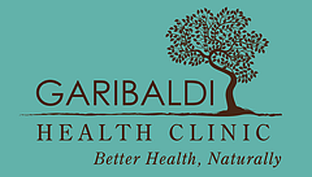It’s sweet, it’s sneaky, it’s terribly addictive – and unfortunately it is everywhere. On its own, sugar has no nutritional value whatsoever: no protein, no vitamins, no minerals, no enzymes, no antioxidants. In fact, sugar actually steals nutrients from the body as it’s digested. When you consume sugar, you’re consuming empty calories that actually do more harm than good.
Sugar promotes weight gain, weakens the immune system, boosts insulin and blood sugar levels as well as increases your risk of developing cardiovascular disease and diabetes. According to some studies, sugar can also increase your risk of developing cancer. Artificial sweeteners, such as aspartame, can interfere with your hormones, increase your cravings and lead to anxiety, headaches, arthritis and depression. Sugar is also harmful for your teeth as it promotes the growth of bad bacteria in your mouth which can lead to tooth decay and cavities.
The most common types of sugar are: Brown Sugars (brown sugar, evaporated cane juice), Liquid Sugars (high fructose corn syrup, agave syrup, molasses, maple syrup, honey) Sugar Alcohols (xylitol, sorbitol) and Sugar-free Sweeteners (aspartame, stevia, sucralose).
Ever wonder how much sugar is in your daily diet? Here is a list of commonly eaten foods whose sugar content might surprise you.
Fruit Yogurt
Yoplait Original Fruit Yogurt (Strawberry) 18g
Liberte Greek Yogurt 6g
Pasta Sauce
PC Fire-Roasted Tomato Pasta Sauce 7g
Bagels
Silver Hills Bakery Sprouted Bagels Mack’s Flax 3g
Granola Bars
Nature Valley Crunchy (Oats ’n Honey) 12g
Fruit Juice
Santa Cruz Organic Lemonade (per one bottle or 4 servings) 25g
Don’t Be Fooled: Agave Syrup, which has been falsely marketed as a natural sweetener, contains anywhere from 55% to 80% fructose. Most store-bought honey contains 40% fructose, however it remains an immune-boosting antioxidant in its natural raw form.
Learn to avoid and reduce the amount of sugar you consume on a daily basis by following these tips:
- A general rule of thumb is that if an ingredient ends in -ose (glucose, dextrose, fructose, galactose), it’s a form of sugar.
- Read your labels! Avoid buying foods that contain more than 3g of sugar per serving.
- Try to increase your amount of protein (nuts, seeds, fish, poultry, meat, legumes, lentils, eggs, quinoa) and ‘good’ fats (avocado, nuts, seeds, fish, olive oil) in the diet. Often when we think we want a sugary treat, we are actually low in fats and protein and need to boost up these in our diet.
- Choose fresh fruit over dried fruit. Cranberries, raspberries, pears, peaches and blueberries are all low-sugar, high-fibre fruits. Dried fruit contains far more sugar than fresh fruit – hence why it tastes sweeter!
- Experiment with sugar substitutes. Unsweetened applesauce, banana, vanilla and pureed fruit are all good fill-ins.
- Ditch the pop or juice, and replace it with either water, herbal teas, or use a soda stream with just a splash of real fruit juice or some lime.
- Moderation – like with anything, small amounts of sugar are okay. It is when it creeps up to an abnormally high level in the diet that it can cause problems. The more sugar we have, the more we want – the basis of a lot of addiction.



No Comments